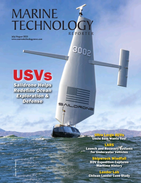Atlantic Ocean Lionfish Epidemic
Lionfish - Pterois volitans (red lionfish) and Pterois miles (devil firefish) - are venomous, voracious and fast reproducing fish that are not native to the Atlantic Ocean and have no known predators, other than human beings. If Lionfish are not hunted and killed by human beings, they can potentially destroy 90% of any reef they attack.
“The lionfish invasion is probably the worst environmental disaster the Atlantic will ever face,” said Graham Maddocks, president and founder of Ocean Support Foundation, which works with the government and research agencies to help reduce the lionfish population in Bermuda. Lionfish were first recorded decades ago and their population has grown quickly. They can produce 30,000 to 40,000 eggs every few days and are sexually mature when they are 1 year old. They can be found throughout the Amazon Basin, the Bahamas, the Caribbean and in the waters along the East Coast of the United States.
As a non-indigenous species, lionfish are especially dangerous to the ecosystem because fish in the Atlantic lack a native instinct to stay away from them. Florida ornamental fish owners are blamed for their release into the ocean and incredibly, DNA evidence traces all lionfish in the Atlantic back to only six to eight female lionfish. Lionfish are slow-moving and conspicuous, so they must rely on their unusual coloration and fins to discourage would-be predators from eating them. Lionfish are now one of the top predators in many coral reef environments of the Atlantic.
Lionfish consume over 50 species of fish including some economically and ecologically important species, they are active hunters who ambush their prey by using their outstretched, fan-like pectoral fins to slowly pursue and "corner" them. Lionfish are thought to be nocturnal hunters, but they have been found with full stomachs during the day in the Atlantic.
They move about by slowly undulating the soft rays of the dorsal and anal fins. During the day, they sometimes retreat to ledges and crevices among the rocks and corals. Although lionfish have been used as a food source in their native range in the South Pacific and Indian Oceans, they are far more important economically to the aquarium trade. They are also attractive to look at and popular among underwater photographers at their native habitats and are very popular and common saltwater aquarium fish.
Ecologist James Morris with the National Centers for Coastal Ocean Science, a division of NOAA, said that while this may not be the worst epidemic the Atlantic Ocean has faced, it does have the makings of a disaster. He said the lionfish has brought a "big change in biodiversity," and it is what he called "the most abundant top-level predator on some coral reefs (in the Atlantic)." Lionfish are an invasive species that seriously threatens the stability of coral reefs along the U.S Atlantic seaboard, the Bahamas, all of the Caribbean and the North Coast of South America, in time, if they are not hunted, Lionfish will devastate corals in the Eastern North Atlantic, while at the same time migrating all the way down the lengthy Brazilian coast. If the Lionfish issue is not tackled decisively, in a couple of decades they may bring utter devastation to coral reefs in all the Eastern Atlantic.






























 August 2025
August 2025



